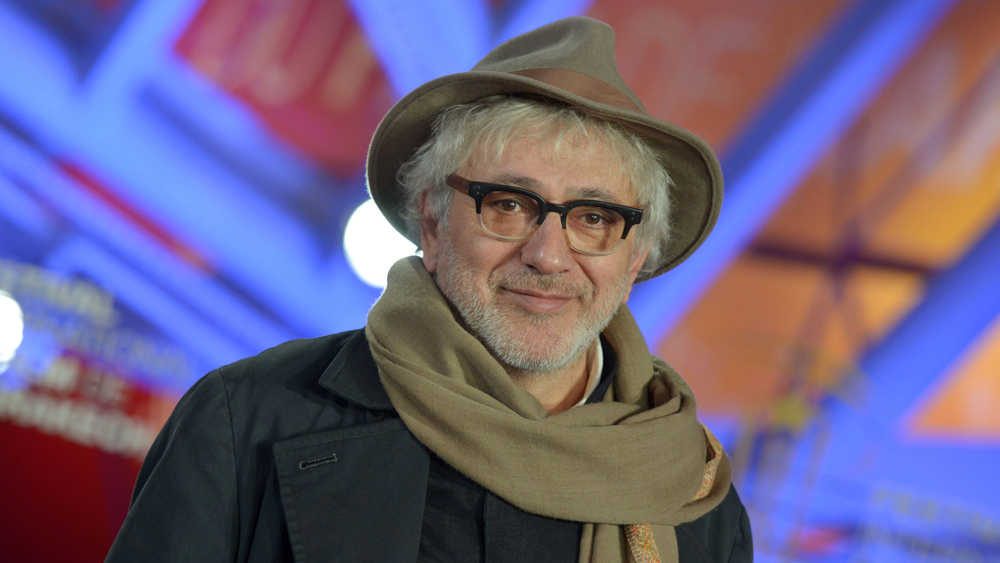In the new poster for Star Wars: The Last Jedi, Mark Hamill’s character looms menacingly in the background – just like his dear old dad Darth Vader used to.
When giant Snoke told us last time out that there had been an “awakening”, most Star Wars fans assumed the alien overlord must be referring to Daisy Ridley’s proto-Jedi Rey and her madcap Force visions. But it’s becoming increasingly obvious in the run-up to Rian Johnson’s The Last Jedi that disturbances in the Force are more insidious and potentially wide-ranging.
The clues are in publicity material for Johnson’s film, which seems to be positioning Mark Hamill’s ageing Jedi knight as the villain of the piece. There is a tradition in Star Wars posters, for instance, that sees the bad guy positioned in the background, looming horribly over the story’s heroes. It goes back to the original trilogy, when Darth Vader took up that spot in a decent proportion (though not all) of the main posters for all three movies. (For The Phantom Menace’s posters, the snakelike red and black features of Darth Maul often replaced Vader, while in Revenge of the Sith, Vader once again returned to the slot. Attack of the Clones posters often feature no villain in the background, possibly because the relevant graphic designer struggled as much as the rest of us to work out who the bad guy was after sifting through the nebulous plotting of that deeply muddled and underwhelming film.)
Check out the brand new poster for Star Wars: #TheLastJedi and watch the trailer tonight. pic.twitter.com/A4UGpYqoeW
— Star Wars (@starwars) October 10, 2017
In the new poster for The Last Jedi it is a giant, looming Luke positioned to the rear, taking his dear old dead cyborg dad’s place. Moreover, a new display for the film’s Imax release sees two split posters based on the traditional division in the Force between dark and light. Skywalker not only appears on the light side, with Rey, Finn, Chewie and Leia, he is also on the dark side with Captain Phasma and Ren. “Hell the what?!!” As Yoda might have said.
The idea that Luke might finally be set to shift, definitively, to the dark side, is unsettling for those of us who have a special place in our celluloid hearts for the original trilogy. But, in terms of creating dramatic weight for the new triptych of movies, it makes a certain sense. JJ Abrams was sold on the idea of directing The Force Awakens after LucasFilm president Kathleen Kennedy asked him to ponder the question: “Who is Luke Skywalker?” This implies that the Star Wars powers that be have been thinking a lot about what kind of person Obi-Wan’s apprentice might have become in the three decades or so since we last saw him. Han Solo seemed to have changed very little between his final appearance in 1983’s Return of the Jedi and his grizzled but enduringly charismatic turn in The Force Awakens, but repeating that trick with Skywalker would surely have led to accusations of lazy film-making. So it makes sense that screenwriters would look to try a different approach for The Last Jedi.
For long-term fans, there’s also another way to look at things. Never for a second while watching the original Star Wars movies did any of us believe that Luke truly would follow his father to the dark side. In fact, not once in the original trilogy did he ever seem remotely tempted. For all those swampy scenes on Dagobah with Yoda and Obi-Wan warning ominously about the dangers of a fall from the light, the Empire simply never seemed all that enticing. A future of serving the hideous Emperor Palpatine, or one helping to lift the known galaxy from under the boots of stormtrooper repression: it was always obvious which way our hero was going to go.
But, if Luke really should fall to the dark side, the tensions of the original trilogy are enhanced, and those moments in which our hero impulsively opts to ignore the advice of his mentors could take on new significance. There has never been any real payback for the Jedi knight following the impulsive decision to leave his training partway through and fly to the defence of his friends in The Empire Strikes Back. But if Skywalker finally succumbs to the dark side, that oversight might be both retrospectively explained and given lasting significance.
There is another alternative here, of course. Luke might just be set to form a new order, free of the trappings of either side of the Force, like the so-called “Gray Jedi” of the Expanded Universe and Star Wars Rebels’ Ahsoka Tano. Personally, I like the idea of Luke as villain of the piece a little more. If you’re going to turn a much-loved character on his or her head, and “ruin” plenty of fortysomething childhoods in the process, at least have the guts to go the whole way.
Written by: Mark Hamill, First Published on theguardian.com






Leave A Comment
You must be logged in to post a comment.